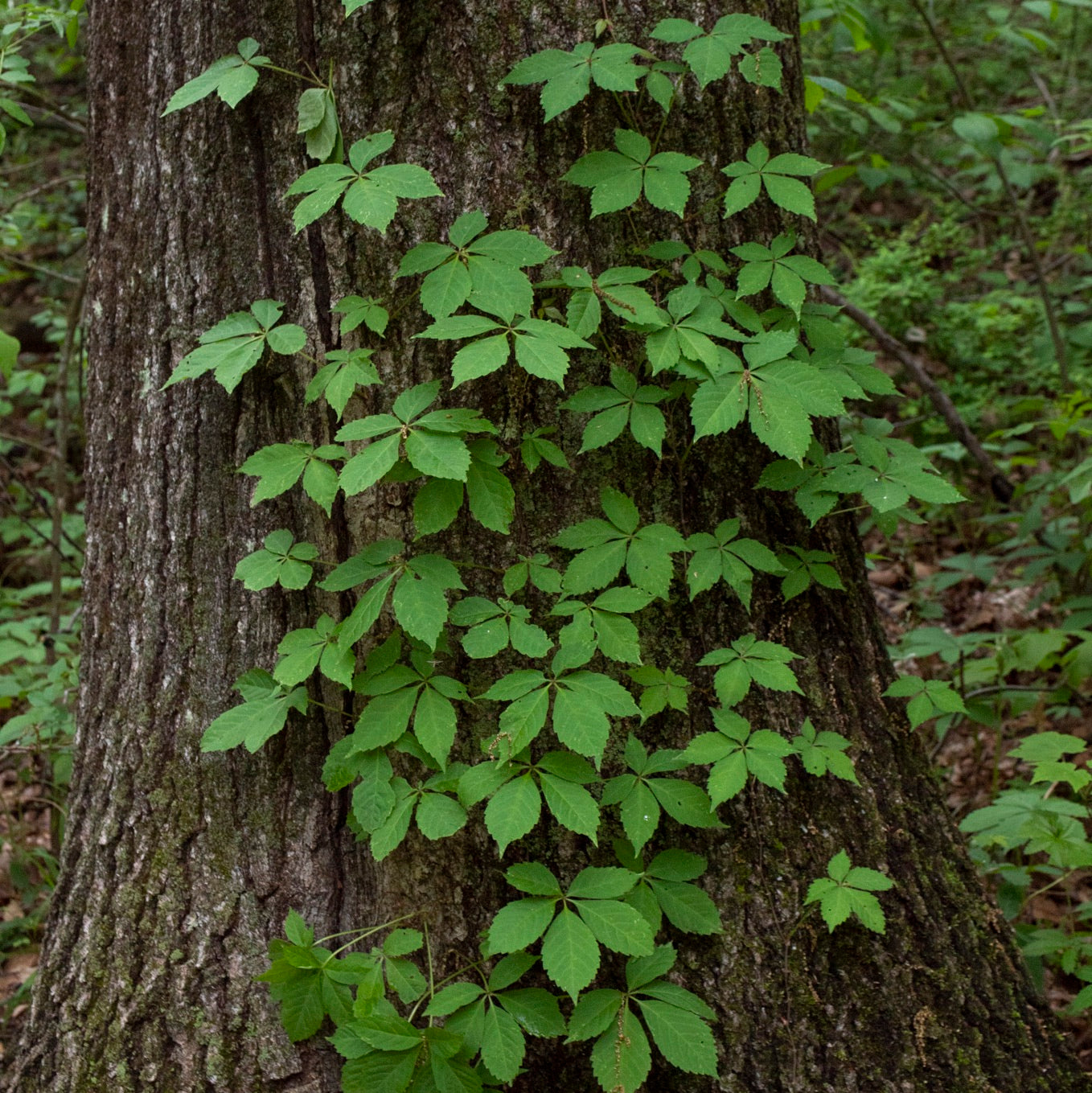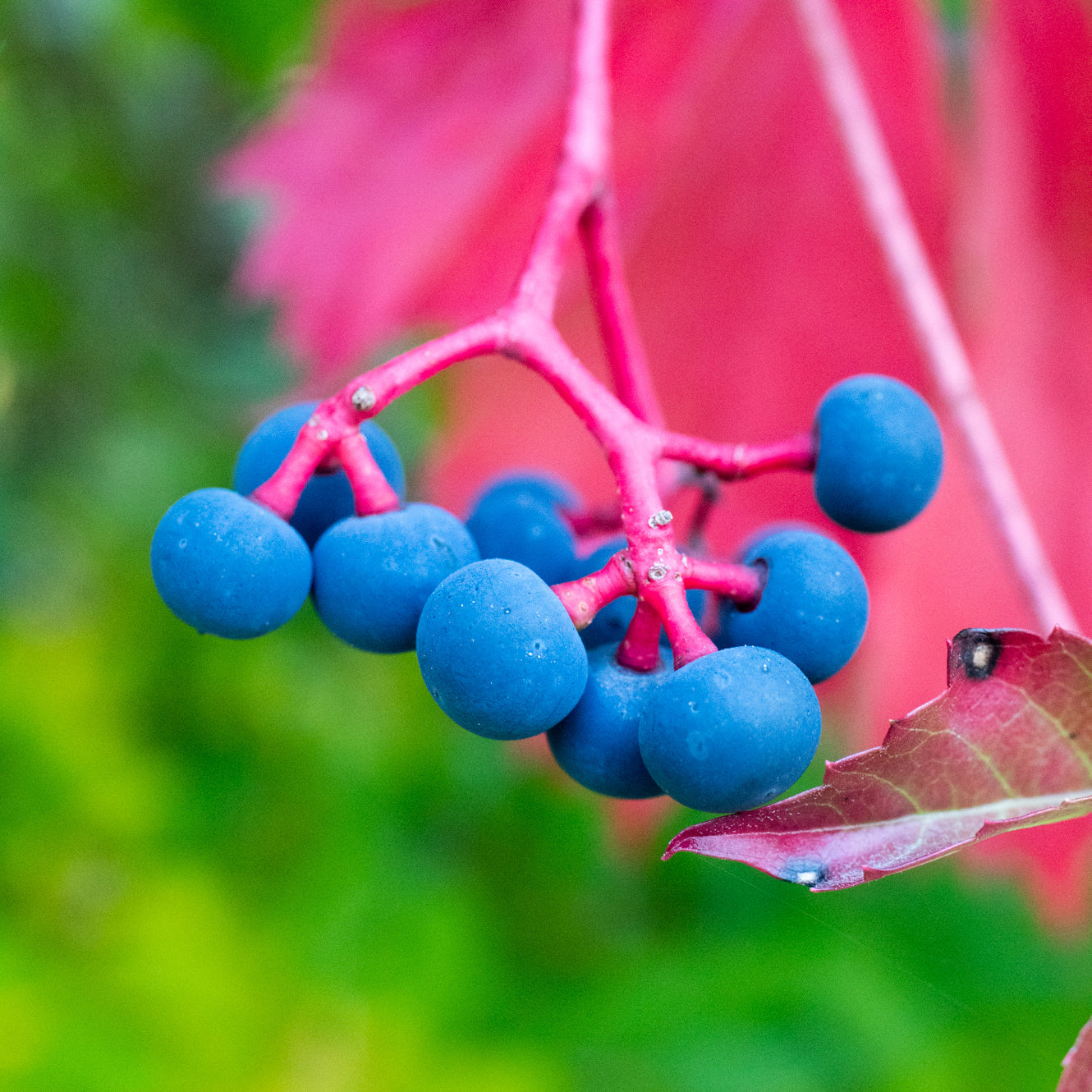Virginia creeper
Parthenocissus quinquefolia
Parthenocissus quinquefolia
Couldn't load pickup availability
Sun/shade: Full sun to full shade
Soil moisture: Dry to medium
Height: Up to 40'
Flowering period: -
Deer resistance: Medium
When the trees of the forest are still green in the fall, their stems often become clad in red. The red color is owing to the presence of Virginia creeper, a native climbing vine whose seasonal color change happens before that of many other woodland plants. The vine is nearly ubiquitous in the forest, spreading across the ground and scaling trees, rocks, and any other objects it encounters.
In the home landscape, Virginia creeper makes an outstanding groundcover as well as a climber for trellises and walls. The plant creates a handsome, leafy layer, and it does well under a wide range of conditions. When planted in full sun and moist soil, Virginia creeper can be prolific, with stems extending 20’ in a single year. When planted in full shade or drier-than-average soil, it will still spread, but at a slower rate.
If Virginia creeper spreads more than is desired, it can be pruned at any time. It should be noted, though, that wherever the plant grows along the ground, it will root into the soil at each of its nodes (i.e., points of leaf attachment on the stem). As a groundcover, Virginia creeper is an excellent native replacement for exotic plants like English ivy, pachysandra, and myrtle. To make the most of Virginia creeper’s fall color, plant it in an area of full sunlight, which will maximize color development.
Virginia creeper is quite beneficial to wildlife, producing berries that are a key food source for migratory songbirds in the fall. The berries are high in antioxidants and are energy rich, containing 24% fat. Research has shown that birds seek out the fruit of Virginia creeper, preferentially consuming it over the less nutritious fruits of many common introduced plants.
Photos by Ashley Keesling.



